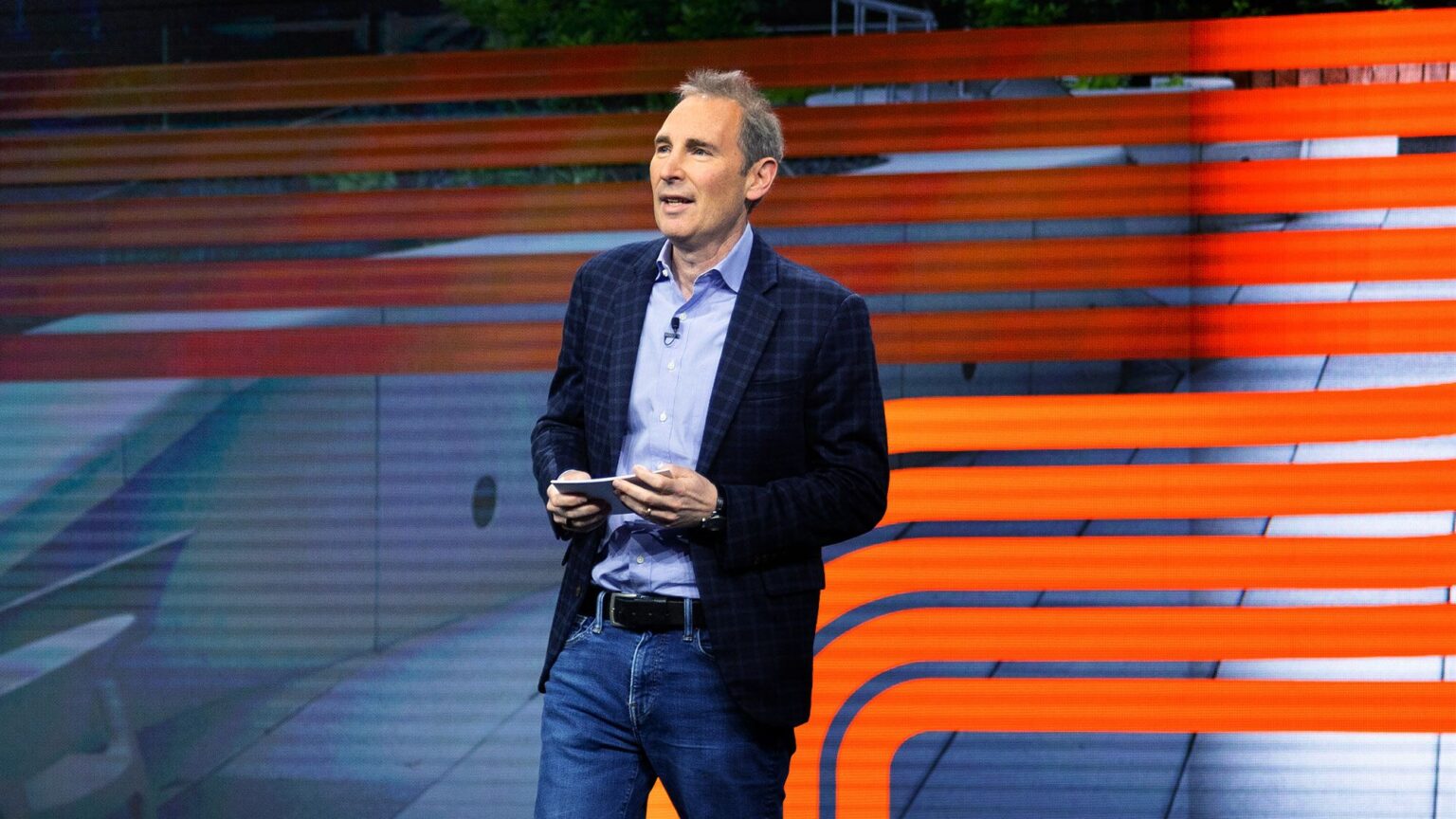Amazon CEO Andy Jassy on Thursday released his annual shareholder letter where he predicted that rapid advancements around artificial intelligence, along with a more competitive chip market, will eventually bring down costs around the technology.
“AI does not have to be as expensive as it is today, and it won’t be in the future,” Jassy wrote.
Jassy said more price-performant chips, along with improvements in “model distillation, prompt catching, computing infrastructure, and model architectures” will over time reduce the “cost per unit in AI,” which will “unleash AI being used as expansively as customers desire.”
He likened it to the company’s cloud juggernaut, which brought down the cost of compute and storage, leading to “more invention, better customer experiences, and more absolute infrastructure spend.”
Amazon has earmarked up to $100 billion this year on capital expenditures, with the lion’s share going to AI-related projects. The company has been rushing to invest in data centers, networking gear and hardware to meet vast demand for generative AI, which has exploded in popularity since OpenAI released its ChatGPT assistant in late 2022. Amazon has introduced a flurry of AI products, including its own set of Nova models, Trainium chips, a shopping chatbot, and a marketplace for third-party models called Bedrock. It also overhauled its decade-old Alexa digital assistant with generative AI features.
Jassy, who became CEO in 2021 when founder Jeff Bezos stepped down, has sought to streamline the company’s vast business footprint and bring costs in check, at the same time that he’s deepened investments in some areas.
The company laid off more than 27,000 employees in 2022 and 2023. It had smaller rounds of job cuts in 2024 that are stretching into this year. The company has also continued to wind down some of its more experimental or unprofitable initiatives, such as a “Try Before You Buy” clothing service, a TikTok-like video feed and a speedy brick-and-mortar delivery program.
Jassy said Amazon must continue to operate like the “world’s largest startup” that moves quickly without bureaucracy, is “scrappy” and is willing to take risks.
Last September, as part of a broader return-to-work mandate, Jassy said Amazon would simplify its corporate structure. He set a goal to increase the ratio of individual contributors to managers by 15% by the end of this year’s first quarter.
As part of that, Jassy also created a “bureaucracy mailbox.” He said on Thursday that he’s received almost 1,000 emails from employees describing bureaucracy examples, and the company has made more than 375 changes based on that feedback.
“Builders hate bureaucracy,” Jassy wrote. “It slows them down, frustrates them, and keeps them from doing what they came here to do. As leaders, we don’t always see the red tape buried deep in our organizations, but we can sure as heck eliminate it when we do. We’ve already made over 375 changes based on this feedback.”
Our total revenue grew 11% year-over-year (“YoY”) from $575B to $638B. By segment, North America revenue increased 10% YoY from $353B to $387B, International revenue grew 9% YoY from $131B to $143B, and AWS revenue increased 19% YoY, from $91B to $108B. For perspective, just 10 years ago, AWS revenue was $4.6B; and in that same year, Amazon’s total revenue was $89B.
Amazon’s operating income in 2024 improved 86% YoY, from $36.9B (an operating margin of 6.4%) to $68.6B (an operating margin of 10.8%). Free Cash Flow, adjusted for equipment finance leases improved from $35.5B in 2023 to $36.2B.
Apart from the financial results, we made our customers’ lives meaningfully better and easier. In our Stores business, we substantially expanded selection, continued lowering prices (independent research firm, Profitero, found Amazon the lowest-priced online U.S. Retailer for the eighth year in a row), and for the second year in a row, we shipped at record speed to our Prime members. AWS launched a slew of new infrastructure and AI services that make it even easier to build remarkable customer experiences, including our latest custom AI silicon (Trainium2), a new set of frontier foundation models in Amazon Nova, and significant expansion of available models and features in our leading Generative AI (“GenAI”) services Amazon SageMaker and Amazon Bedrock. Prime Video continued to offer compelling original shows, including new seasons for Fallout, Reacher, The Boys, and The Lord of the Rings: Rings of Power, movies like Road House, The Idea of You, and Red One, live sports like Thursday Night Football and UEFA Champions League in Europe (with the NBA and NASCAR coming in 2025), and new selection, highlighted by Apple TV+ joining Prime Video Channels. We launched a series of new Kindle devices that included a new color version, a larger Scribe option, and our fastest Paperwhites ever (the collection of which drove the highest Kindle unit sales for a single quarter in over a decade). And, we continued to add more selection, price transparency, and same day shipping for Amazon Pharmacy.
These accomplishments are a subset of what the team launched in 2024, but represent a lot of invention, hard work, and thoughtful execution across Amazon. I’m thankful for my teammates and their delivery this past year (some of which you can see in our 2024 results, others of which won’t be visible for the next few years).

